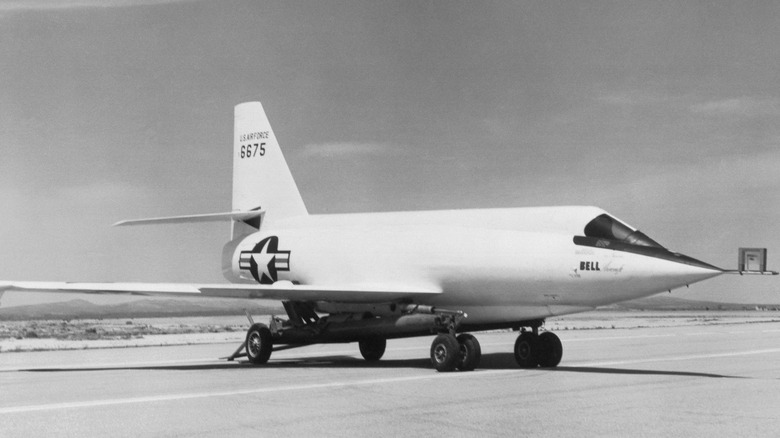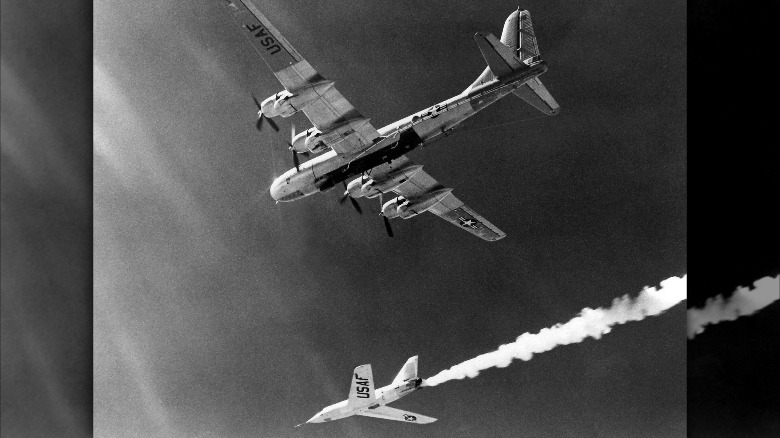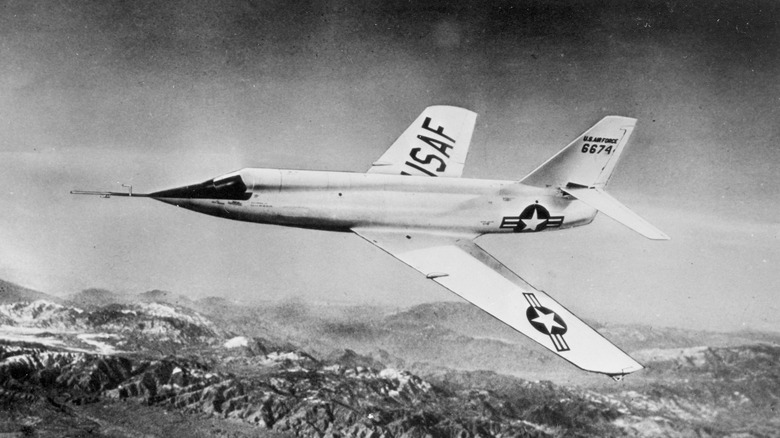How Chuck Yeager's Groundbreaking Record Led To The Bell X-2's Tragedy
The Bell X-1 rocket plane proved that man was capable of breaking the sound barrier. Chuck Yeager, a pilot who was already well known for his skill behind the flight stick of a P-51 Mustang during World War II, was the first pilot to travel Mach 1 on October 14th, 1947. Chuck Yeager and the X-1, named "Glamourous Glennis" changed aircraft and the understanding of science forever.
Not content with merely going well over 700 miles per hour, NASA was quick to develop the Bell X-2 rocket plane with its first powered flight occurring on November 18th, 1955 after nearly 10 years of development and unpowered gliding tests that unfortunately resulted in the death of two aviators, Jean L. "Skip" Ziegler and Frank Wolko.
Instead of having a pair of straight wings like the X-1, the X-2's wings were dramatically swept back and the overall airframe was significantly more aerodynamic than its predecessor. It was officially given the name "Starburster." Its method of getting up in the air was unconventional in today's world, but almost par for the course in wacky Cold War-era aviation projects. It was carried into the sky attached to a Boeing B-50 mothership.
Astonishingly fast
Once the Starburster was actually in the air and flying under its own power, it proved to be absurdly fast. By April 1956, it could fly at a speed of Mach 1.4, according to NASA. Shortly afterward, that speed climbed dramatically to Mach 2.53. Then, on July 23rd, 1956, pilot Frank Everest hit an astonishing speed of Mach 2.87, which is about 1,895 miles per hour. But that wasn't the end of the X-2's records. In September of the same year, Captain Iven C. Kincheloe took the X-2 to new heights, literally, He piloted the rocket plane to an altitude of 126,200 feet, almost halfway to space.
As earth-shattering as the Bell X-2 was, its testing would end in tragedy. During its final flight, Captain Milburn G. Apt took the X-2 even faster than before, becoming the first person to reach Mach 3, topping out at Mach 3.196 or about 2,094 miles per hour. Unfortunately, after reaching that monumental speed, the X-2 lost all control and plummeted to the ground near Edwards Air Force Base in California on September 27th, 1956. Apt did not survive the crash.


